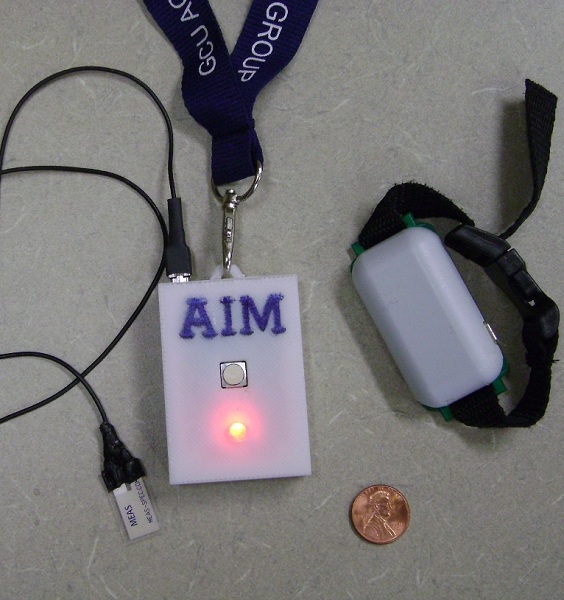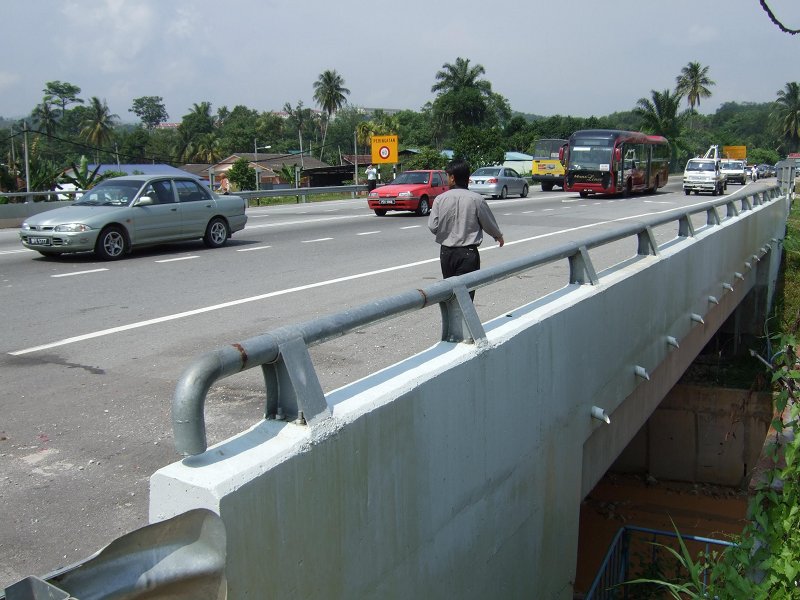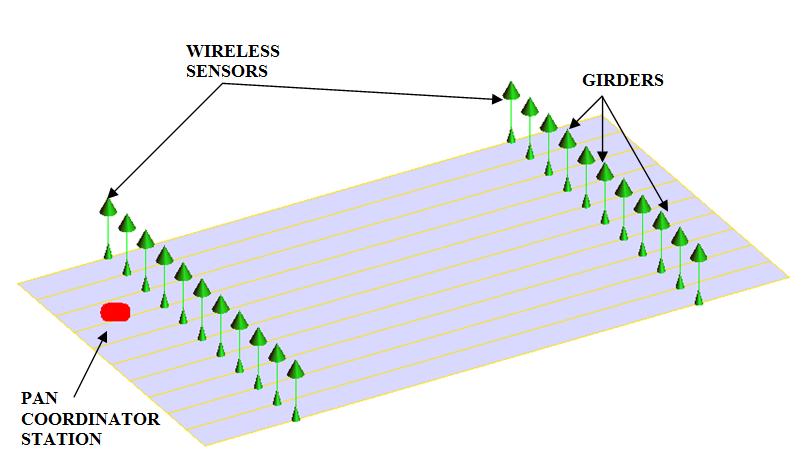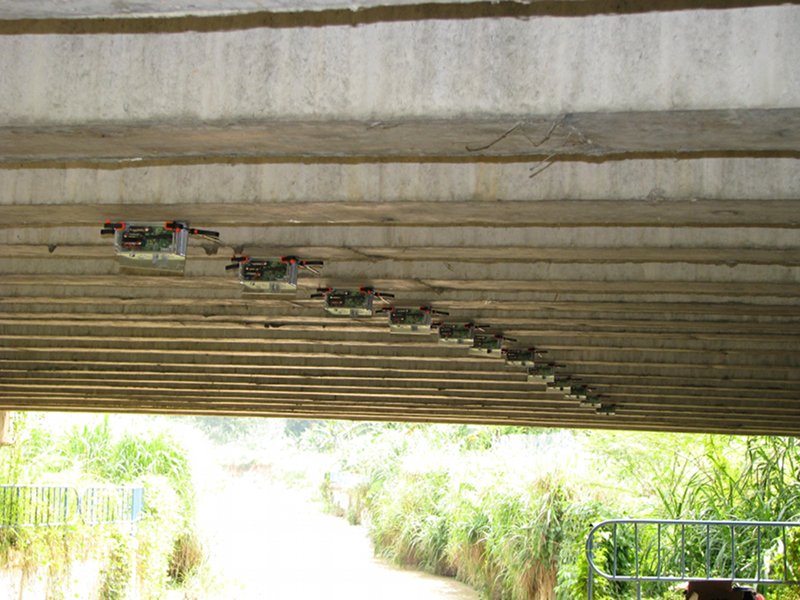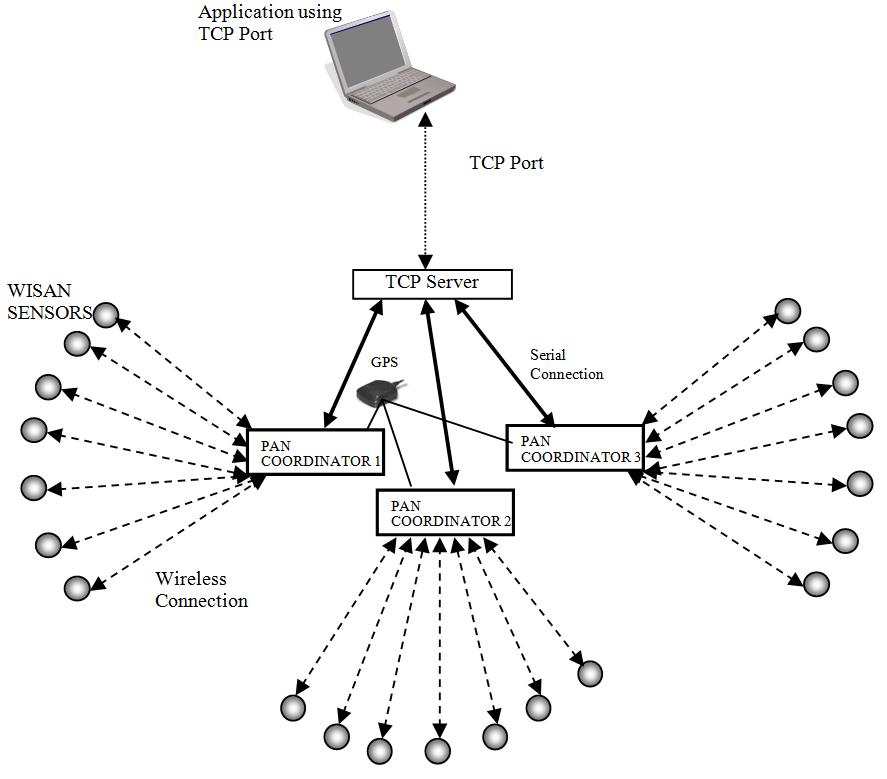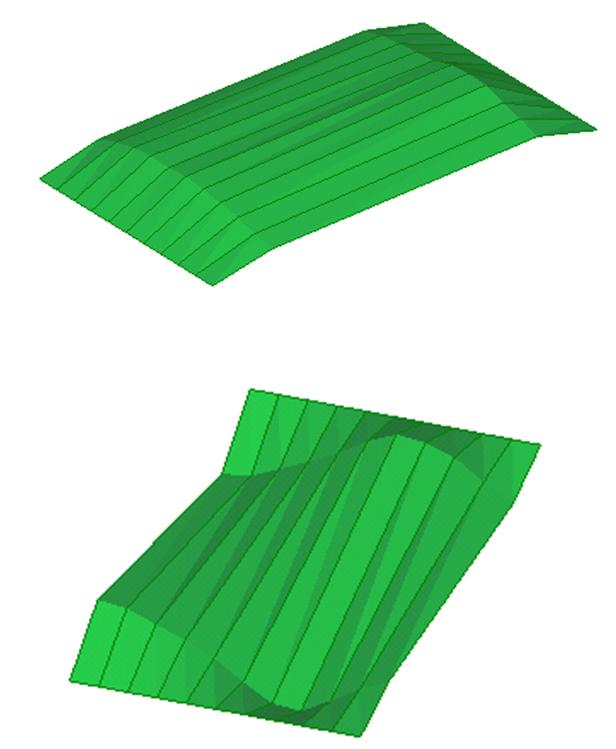Energy harvesting as enabling factor for bridge monitoring
Wireless monitoring of civil engineering structures such as bridges and overpasses has gained a lot of interest in the recent years. Bridge collapses happen suddenly and unpredictably and often lead to tragic loss of human lives. In 2006 Federal Highway Administration listed 25.8% of nation's 596,842 bridges either as structurally deficient or functionally obsolete. While many of these bridges will remain in service for many years, they need monitoring and rehabilitation.
Presently, bridge monitoring is performed through periodic visual inspections. In the tragic example of I-35W Mississippi River bridge collapse, the bridge passed a visual inspection a year prior to failure. Many researchers are suggesting installing wireless monitoring sensors that can continuously monitor bridge condition and report any changes that may lead to failure. Wireless sensors are easy to install and can be applied to existing highway infrastructure.
The problem arises in proving power to operate wireless sensors for bridge monitoring. Since every bridge would have at least several sensors which could be installed in hard to access locations. Replacing millions and millions of batteries would become a huge logistic problem and add to the expense of maintaining bridges. Another important factor is environmental impact of discarding used batteries.
We suggest using vibration of bridges caused by passing traffic, wind and microtremors to power the bridge monitoring sensors. The battery is completely eliminated from the equation. Hermetically sealed sensors powered by bridge vibration can remain on the bridge for decades and provide continuous monitoring.
We use RT11 bridge in Potsdam, NY for a case study.

Figure 1. RT11 bridge in Potsdam (February 2006)
RT11 bridge is a steel girder bridge, one of the most common types of bridges. Energy can be harvested by locating a generator and sensors on the bottom or top flange of a girder. The following figure shows the spot where the self-powered sensor was installed.

Figure 2. Location of sensor installation

Figure 3. Electromagnetic energy harvester
Vibration of the bridge is harvested by an aircore tubular linear generator which responds to one of the natural vibration frequencies of the bridge. Each time a car or a truck pass over the bridge, even in the different lane from the sensor installation, the whole structure vibrates and excites the mover in the generator thus producing AC voltages on the output.
RT11 bridge is located in rural area and has fairly low traffic. In this sense it presents a more difficult scenario then a high-traffic bridge in urban areas. Figure 4 illustrates vibration patterns caused by passing traffic and the output voltage of the energy harvester. It can be clearly seen the structure experiences significant vibrations only periodically, while most of the time harvester output is rather low.

Figure 4. Time history of bridge vibration (acceleration) and open circuit voltage of the generator
A wireless self-powered sensor has the following key tasks:
- Effectively convert AC voltage from the generator to DC voltage that can be used for powering of the sensors. Active intelligent conversion may raise the amount of available energy upto 500%.
- Store the accumulated energy until the level becomes sufficient to perform a useful task.
- Effectively use stored energy to perform a measurement and wireless transmission.
Figure 5 shows a wireless sensor platform that excels at all these tasks. This is a early prototype of a wireless platform that is now known as AmbioMote a product manufactured and sold by AmbioSystems.

Figure 5. Early prototype of AmbioMote.
Ambiomote is designed to work with high-impedance high-voltage energy harvester such as electromagnetic and piezoelectric generators. The devices handles intelligent energy (AC->DC) conversion, significantly boosting the efficiency of energy harvesting Figure 6 shows the charge on a storage capacitor after a single pulse excitation of electromagnetic generator. Compared to a regular rectifier-capacitor pair, AmbioMote is capable of capturing 400% greater energy! (E=0.5CV2)
AmbioMote provides low-leakage multi-stage storage, a high-speed (2Mbps) radio, a variety of digital and analog sensor interfaces. A single 6-byte radio transmission uses only 4.5 uJ of energy, a read of a temperature sensor 8 uJ, and so on.
Figure 6. AmbioMote (left) and rectifier-capacitor harvesting a single 10mm displacement pulse from the linear generator. on a1000uF storage capacitor.
A bridge experiment was conducted in June 2007 using the following setup (Figure 7). The energy harvester was clamped to the bottom flange of the girder. The output of the energy harvester powered the AmbioMote prototype. When stored energy became sufficient for an atomic operation, AmbioMote woke up from sleep mode, measured temperature and transmitted the measurement via the wireless interface. A receiver module was connected to a portable computer on a USB port. On each reception the receiver would display reception time, sensor ID and temperature value on the computer screen.

Figure 7. Bridge experiment setup.
Bridge energy harvesting video
The following video illustrates the bridge self-powered sensor in action. The video consists of two short segments. The first segment shows wireless transmissions generated by the sensor from excitation generated by a medium-sized truck. The second illustrates transmissions generated by a heavy truck.
24-hr monitoring
The self powered sensor is capable of monitoring bridge condition for 24-rs. The following graph shows the number fo measurements per hour in one day of September 2007. As the graph shows, even deep in the night, the energy harvesting devices generate enough power to perform measurements.

Conclusions
We have crated a proof-of the concept device that uses vibration of a highway bridge to power a wireless monitoring device. Such sensors can be used to monitor temperature, ice conditions, traffic flows and health status of highway bridges without need of maintenance for decades.
Acknowledgements
We gratefully acknowledge support provided by the Transportation Research Board of the National Academies.


